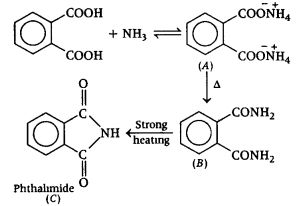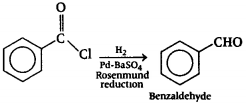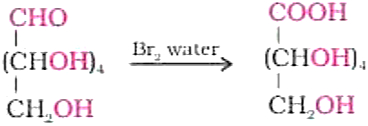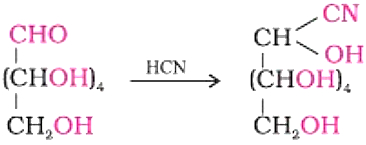Sample paper of Chemistry Class 12
Prepare effectively for your upcoming exams with CBSE Class 12 Chemistry Sample Papers 2025, available for free download in PDF format on the myCBSEguide app and website.Download the CBSE Class 12 Chemistry Sample Papers 2025 to practice effectively for your board exams. These sample papers are designed based on the latest CBSE marking scheme and blueprint for the 2025 board exams, ensuring that students are practicing with the most relevant and up-to-date materials. Each CBSE Class 12 Chemistry Sample Paper comes with detailed solutions to help students understand the best approach to answering questions. CBSE Sample Papers for Class 12 Chemistry 2025 are created in line with the most recent exam pattern and blueprint.
The CBSE Sample Papers for Class 12 Chemistry offer an excellent way for students to familiarize themselves with the types of questions likely to appear in the exams, while the included marking scheme and blueprint provide important insights into exam patterns. By downloading these sample papers, students can learn how to prepare for CBSE board exams and significantly improve their chances of scoring well. Accessing CBSE Chemistry Sample Papers Class 12 through the myCBSEguide Website ensures that you have all the study material you need in one place. Get started today and practice CBSE Class 12 Chemistry Sample Papers with questions and answers to build confidence and master key concepts. Download the app now to get the most current and comprehensive study resources!
Sample Papers of Class 12 Chemistry 2025 with Solution
CBSE Class 12 Chemistry Sample Papers 2025 – in PDF
myCBSEguide offers free access to CBSE Class 12 Chemistry Sample Papers 2025 with solutions in PDF format. These sample papers are based on the latest CBSE syllabus and NCERT books, ensuring that students are practicing with the most current materials. It is essential for students to download and practice Class 12 Chemistry Sample Papers regularly to familiarize themselves with the marking scheme and blueprint outlined by CBSE. The CBSE Sample Papers for Class 12 Chemistry for the year 2025 follow the updated exam pattern, reflecting the latest changes in the syllabus and question types. Students can also download Class 12 Chemistry Sample Papers from the myCBSEguide app to practice on the go. To ensure the best preparation, students should always check the latest CBSE syllabus and marking scheme before attempting the sample papers. With myCBSEguide, students can access a wide range of CBSE Class 12 Chemistry Sample Papers for 2025, as well as papers for other subjects, designed to help them score higher in their board exams.
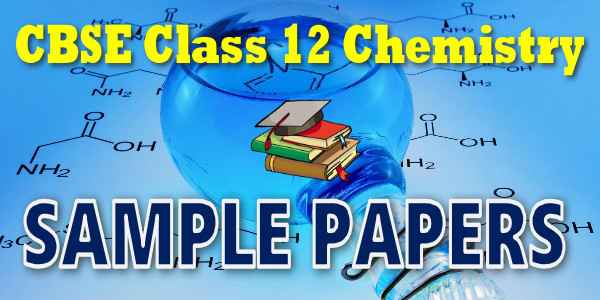
Sample Papers Class 12 Chemistry 2024-25
Class 12 – Chemistry
Sample Paper – 01 (2024-25)
Maximum Marks: 70
Time Allowed: : 3 hours
General Instructions:
Read the following instructions carefully.
- There are 33 questions in this question paper with internal choice.
- SECTION A consists of 16 multiple-choice questions carrying 1 mark each.
- SECTION B consists of 5 very short answer questions carrying 2 marks each.
- SECTION C consists of 7 short answer questions carrying 3 marks each.
- SECTION D consists of 2 case-based questions carrying 4 marks each.
- SECTION E consists of 3 long answer questions carrying 5 marks each.
- All questions are compulsory.
- Use of log tables and calculators is not allowed.
-
-
- Section A
- Which of the following reactions is a halogenated exchange reaction:
a) {tex}R-OH\;+\;HCl\;\xrightarrow{ZnCl_2}\;R-Cl\;+\;H_2O{/tex}b)
 c)
c) d) {tex}R-X\;+\;NaI\;\xrightarrow{Dry\;acetone}\;R-I\;+\;NaX{/tex}
d) {tex}R-X\;+\;NaI\;\xrightarrow{Dry\;acetone}\;R-I\;+\;NaX{/tex} - The most appropriate base pair in a double helix of DNA is
a) A – Tb) A – Cc) C – Td) T – G
- Alcohols are easily dehydrated in the following order:
a) Secondary > Tertiary>Primaryb) Primary> Secondary >Tertiaryc) Tertiary > Secondary > Primaryd) Secondary > Primary>Tertiary
- Which of the following does not give Cannizaro reaction?
a) (CH3)3 C – CHOb) (CH3)2 CH – CHOc) HCHOd)

- The chemical reaction in which reactants require high amount of activation energy are generally
a) Fastb) Instantaneousc) Slowd) Spontaneous
- Match the items given in column I with that in column II:
Column I Column II (a) Hypertonic (i) NaCl. (b) Hypotonic (ii) Solution having higher osmotic pressure than other solution. (c) Isotonic (iii) Solution having lower osmotic pressure than other solution. (d) Electrolyte (iv) Solutions having same osmotic pressure. a) (a) – (ii), (b) – (iv), (c) – (iii), (d) – (i)b) (a) – (i), (b) – (ii), (c) – (iii), (d) – (iv)c) (a) – (iv), (b) – (iii), (c) – (ii), (d) – (i)d) (a) – (ii), (b) – (iii), (c) – (iv), (d) – (i) - The conversion of an alkyl halide into an alcohol by aqueous NaOH is classified as
a) a dehydrohalogenation reactionb) a substitution reactionc) an addition reactiond) a dehydration reaction
- The correct electronic configuration of copper atom is:
a) 3d104s1b) 3d54s24p4c) 3d94s2d) 3d104s2
- Which of the following rate laws is third order overall?
a) rate {tex} = K{\left[ A \right]^5}{\left[ B \right]^2}{/tex}b) rate {tex} = K\left[ A \right]{\left[ B \right]^2}{/tex}c) rate {tex} = K{\left[ A \right]^3}{\left[ B \right]^3}{/tex}d) rate {tex} = K{\left[ A \right]^3}{\left[ B \right]^1}{/tex}
- Which one of the following is used for the separation and purification of aldehydes
a) hydrogen cyanideb) hydrogen sulphitec) Grignard reagentd) Sodium hydrogensulphite
- By heating phenol with chloroform in alkali, it is converted into
a) Phenol benzoateb) Salicylic acidc) Anisole
d) Salicylaldehyde
Download myCBSEguide App for Comprehensive Exam PreparationTo enhance your exam preparation and practice more questions, download the myCBSEguide app today. This app offers complete study material for CBSE, NCERT, JEE (Main), NEET-UG, and NDA exams. The 2025 Class 12 Chemistry sample papers are designed according to the latest CBSE syllabus and marking scheme. Whether you’re a student looking for quality study resources or a teacher aiming to create custom papers, myCBSEguide is your go-to solution for effective learning.In addition, teachers can use the Examin8 app to generate personalized exam papers with their own name, logo, and branding. With Examin8, teachers can create unique question papers for their students, making assessments more tailored and effective. Visit myCBSEguide now for easy access to study materials, sample papers, and solutions, all in one place. Prepare confidently for your exams and ensure success with the best learning tools at your fingertips. Class 12 Chemistry Sample Papers 2025 CBSE provide detailed solutions to help students understand complex concepts.
-
-
- Best method for preparing primary amines from alkyl halides without changing the number of carbon atoms in the chain is
a) Hoffmann Bromamide reactionb) Reaction with NH3c) Gabriel phthalimide synthesisd) Sandmeyer reaction
- Assertion (A): Uracil is present in DNA.
Reason (R): DNA undergoes replication.a) Both A and R are true and R is the correct explanation of A.b) Both A and R are true but R is not the correct explanation of A.c) A is true but R is false.d) A is false but R is true. - Assertion (A): Pentan-2-one can be distinguished from pentan-3-one by iodoform test.
Reason (R): Former is methyl ketone while the latter is not.a) Both A and R are true and R is the correct explanation of A.b) Both A and R are true but R is not the correct explanation of A.c) A is true but R is false.d) A is false but R is true. - Assertion (A): (CH3)3 C–O–CH3 gives (CH3)3 C–I and CH3OH on treatment with HI.
Reason (R): The reaction occurs by SN1 mechanism.a) Both A and R are true and R is the correct explanation of A.b) Both A and R are true but R is not the correct explanation of A.c) A is true but R is false.d) A is false but R is true. - Assertion (A): Phenols cannot be converted into esters by direct reaction with carboxylic acids.
Reason (R): Electron withdrawing groups increase the acidity of phenols.a) Both A and R are true and R is the correct explanation of A.b) Both A and R are true but R is not the correct explanation of A.c) A is true but R is false.d) A is false but R is true. - Section B
- Square planar complexes with a coordination number 4 exhibits geometrical isomerism whereas tetrahedral complexes do not why?
- Zinc salts are white while Cu2+ salts are coloured. Why? [Atomic number of Zn = 30, Cu=29]
- Answer the following:
- For a reaction R {tex}\rightarrow{/tex} P, half-life (t1/2) is observed to be independent of the initial concentration of reactants. What is the order of reaction?
- Why is the probability of reaction with molecularity higher than three very rare?
- Calculate the molarity of {tex}9.8%{/tex} (w/W) solution of H2SO4 if the density of the solution is {tex}1.02 \;g\; {mL}^{-1}{/tex}.(Molar mass of {tex}H_2S{O_4}{/tex}).
OR
Explain why aquatic species are more comfortable in cold water rather than in warm water.
- Write the structures of A, B and C in the following reactions:

- {tex}{\mathrm{CH}}_3{\mathrm{CH}}_2\mathrm{Br}\;\xrightarrow{\mathrm{KCN}}\;\mathrm A\;\xrightarrow{{\mathrm{LiAlH}}_4}\mathrm B\xrightarrow[{0^{\mathrm o}\mathrm C}]{{\mathrm{HNO}}_2}\mathrm C{/tex}
- Section C
- Determine the value of equilibrium constant {tex}({K_c})\,and\,\Delta {G^\theta }{/tex} for the following reaction.
{tex}Ni(s) + 2A{g^ + }(aq) \to N{i^{2 + }}(aq) + 2Ag(s){/tex}
{tex}{E^\theta } = 1.05\,V\,(1\,F = 96500\,C\,mo{l^{ – 1}}){/tex}Download myCBSEguide App for Effective Exam PreparationTo boost your exam preparation and practice more questions, download the myCBSEguide app. This app offers comprehensive study material for CBSE, NCERT, JEE (Main), NEET-UG, and NDA exams. With myCBSEguide, students can access a wide range of sample papers, solutions, and study notes tailored to their exam needs.In addition, teachers can enhance their teaching resources by using the Examin8 app to create customized exam papers with their own name and logo. With Examin8, teachers can create unique question papers for their students, making assessment more tailored and effective.Download the myCBSEguide app today to access a complete study package for all your exam preparation needs. From NCERT solutions to CBSE sample papers, everything you need for your academic success is available at your fingertips. For a well-rounded exam preparation, download CBSE Class 12 Chemistry Sample Papers 2025 along with solutions and revision notes.
- Best method for preparing primary amines from alkyl halides without changing the number of carbon atoms in the chain is
-
-
- Consider the reaction:
2A + B {tex}\to{/tex} C + D
Following results were obtained in experiments designed to study the rate of reaction:Exp. No. Initial concentration (mol L-1 ) [A] [B] Initial rate of formation [D] (m/min) 1. 0.10 0.10 {tex}1.5 \times {10^{ – 3}}{/tex} 2. 0.20 0.20 {tex}3.0 \times {10^{ – 3}}{/tex} 3. 0.20 0.40 {tex}6.0 \times {10^{ – 3}}{/tex} - Write the rate law for the reaction.
- Calculate the value of rate constant for the reaction.
- Which of the following possible reaction mechanism is consistent with the rate law?
- {tex}{\rm{A + B}} \to {\rm{C + E}}\,{\rm{(slow)}}{/tex}
{tex}A + E \to D\,\,(fast){/tex} - {tex}B \to C + E\,(slow){/tex}
{tex}A + E \to F\,\,(fast){/tex}
{tex}A + F \to D\,\,(fast){/tex}
- {tex}{\rm{A + B}} \to {\rm{C + E}}\,{\rm{(slow)}}{/tex}
- Name the following according to IUPAC system.
- {tex}C{H_3} – \mathop C\limits_{\mathop |\limits_{OH} } H – C{H_2} – C{H_3}{/tex}

- {tex}C{H_3} – \mathop C\limits_{\mathop |\limits_{C{H_3}} }^{\mathop |\limits^{C{H_3}} } – C{H_2} – Cl{/tex}
OR
How would you obtain the following.
- Benzoquinone from phenol?
- 2-methyl propan-2-ol from methyl magnesium bromide?
- Propan-2-ol from propene?
- Identify A, B and C in the sequence

- Predict the products of the following reactions:
- Calculate the e.m.f. of the following cell at 298K:
Fe(s) | Fe2+ (0.001 M) || H+ (0.01 M) | H2(g) (1 bar) | Pt(s)
Given that {tex}E_{\text {cell }}^{\circ}{/tex} = +0.44V
[log 2 = 0.3010 log 3 = 0.4771 log 10 = 1] - What are ambident nucleophiles? Explain with an example.
- In the button cell, widely used in watches, the following reaction takes place
{tex}Zn\left( s \right){\rm{ }} + A{g_2}O\left( s \right){\rm{ }} + {\rm{ }}{H_2}O\left( l \right) {/tex} {tex}\to Z{n^{2 + }}\left( {aq} \right) + 2Ag\left( s \right){\rm{ }} + {\rm{ }}20{H^ – }\left( {aq} \right){/tex} Given that {tex}E_{(Ag^+/Ag)}^\Theta = 0.80 V, E_{(Zn^{2+}/Zn)}^\Theta=-0.76\;V{/tex}
Calculate standard emf and standard free Gibbs energy of the cell. - Section D
- Read the following text carefully and answer the questions that follow:
The unique behaviour of Cu, having a positive E° accounts for its inability to liberate H2 from acids. Only oxidising acids (nitric and hot concentrated sulphuric) react with Cu, the acids being reduced. The stability of the half-filled d sub-shell in Mn2+ and the completely filled d10 configuration in Zn2+ are related to their E° values, whereas E° for Ni is related to the highest negative {tex}\Delta_{hyd}{/tex}H°. An examination of the {tex}E^o_{(M^{3+}/M^{2+})}{/tex} values the low value for Sc reflects the stability of Sc3+ which has a noble gas configuration. The comparatively high value for Mn shows that Mn2+(d5) is particularly stable, whereas a comparatively low value for Fe shows the extra stability of Fe3+ (d5). The comparatively low value for V is related to the stability of V2+ (half-filled t2g level).
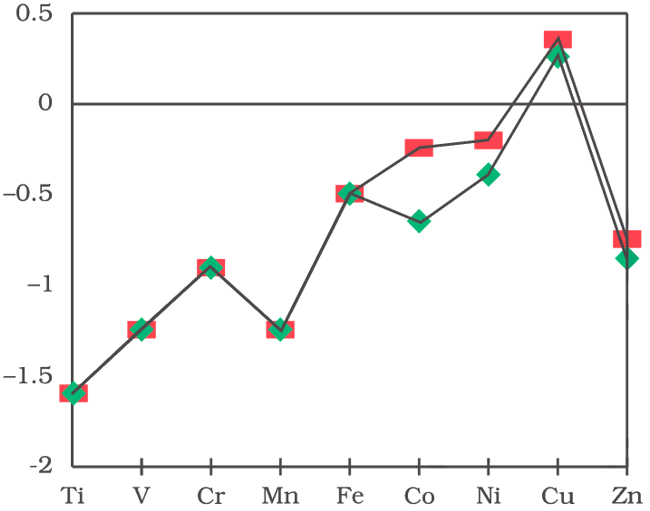
- Why Zn has high value for M3+/M2+ Standard Electrode Potentials? (1)
- Transition metals, despite high E° oxidation, are poor reducing agents. Justify. (1)
- Why is Cr2+ reducing and Mn3+ oxidising when both Cr and Mn have d4 configuration? (2)
OR
Why Cu2+ is more stable than Cu+? (2)
- Read the following text carefully and answer the questions that follow:
Raoult’s law for volatile liquids states that the partial vapour pressure of each component in the solution is directly proportional to its mole fraction, whereas for a non-volatile solute, it states that the vapour pressure of a solution of a non-volatile solute is equal to the vapour pressure of the pure solvent at that temperature multiplied by its mole fraction. Two liquids A and B are mixed with each other to form a solution, the vapour phase consists of both components of the solution. Once the components in the solution have reached equilibrium, the total vapour pressure of the solution can be determined by combining Raoult’s law with Dalton’s law of partial pressures. If a non-volatile solute B is dissolved into a solvent A to form a solution, the vapour pressure of the solution will be lower than that of the pure solvent. The solutions which obey Raoult’s law over the entire range of concentration are ideal solutions, whereas the solutions for which vapour pressure is either higher or lower than that predicted by Raoult’s law are called non-ideal solutions. Non-ideal solutions are identified by determining the strength of the intermolecular forces between the different molecules in that particular solution. They can either show positive or negative deviation from Raoult’s law depending on whether the A – B interactions in solution are stronger or weaker than A – A and B – B interactions.- 20 mL of a liquid A was mixed with 20 mL of liquid B. The volume of resulting solution was found to be less than 40 mL. What do you conclude from the above data? (1)
- Which of the following show positive deviation from Raoult’s law? Carbon disulphide and Acetone; Phenol and Aniline; Ethanol and Acetone. (1)
- The vapour pressure of a solution of glucose in water is 750 mm Hg at 100oC. Calculate the mole fraction of solute. (2)
(Vapour pressure of water at 373 K = 760 mm Hg)
OR
The boiling point of solution increases when 1 mol of NaCl is added to 1 litre of water while addition of 1 mol of methanol to one litre of water decreases its boiling point. Explain the above observations. (2)
- Section E
- Attempt any five of the following:
- What type of protein is present in keratin?
- What happens when D-glucose is treated with the following reagents?
- Br2 water
- HCN
- Differentiate between:
- Peptide linkage and Glycosidic linkage
- Nucleoside and Nucleotide
- What is the difference between a nucleoside and nucleotide?
- What products would be formed when a nucleotide from DNA containing thymine is hydrolysed?
- What is the biological effect of denaturation of proteins?
- Write the full forms of DNA and RNA.
- Of the two bases named below, which one is present in RNA and which one is present in DNA?
- Thymine
- Uracil
- For the complex, [Fe(CN)6]3-, write the hybridisation type, magnetic character and spin nature of the complex. (Atomic number of Fe = 26)
- Draw one of the geometrical isomers of the complex [Pt(en)2Cl2]2+ which is optically active.
-
OR
- A metal complex having composition Cr(NH3)4Cl2Br has been isolated in two forms A and B. The form A reacts with AgNO3 to give a white precipitate readily soluble in dilute aqueous ammonia whereas B gives a pale yellow precipitate soluble in concentrated ammonia.
- State the hybridization of chromium in each of them.
- Calculate the magnetic moment (spin only value) of the isomer A.
- Write IUPAC name and hybridization of the following complexes:
- [Co(NH3)6]3+
- [NiCl4]2-
(Atomic number Ni = 28, Co = 27)
- A metal complex having composition Cr(NH3)4Cl2Br has been isolated in two forms A and B. The form A reacts with AgNO3 to give a white precipitate readily soluble in dilute aqueous ammonia whereas B gives a pale yellow precipitate soluble in concentrated ammonia.
- State the reactions and reaction conditions for the following conversions :
- Benzene diazonium chloride to nitrobenzene.
- Aniline to benzene diazonium chloride.
- Ethylamine to methylamine.
OR
An aromatic compound ‘A’ of molecular formula C7H6O2 undergoes a series of reactions as shown below. Write the structures of A, B, C, D and E in the following reactions.

Download the myCBSEguide App for Comprehensive Exam Preparation
For effective exam preparation and to practice a wide range of questions, download the myCBSEguide app today. This app provides complete study material for CBSE, NCERT, JEE (Main), NEET-UG, and NDA exams. Whether you’re studying for school exams or preparing for competitive tests, myCBSEguide Website has you covered with study notes, sample papers, and solutions.
Teachers can also benefit from the Examin8 app, which allows them to design custom question papers with their own name and logo, offering a personalized assessment experience for their students.
Unlock the full potential of your exam preparation by downloading the myCBSEguide app now and gain access to high-quality resources to help you score better in your exams. With everything you need in one place, myCBSEguide is your ultimate study companion.
Class 12 – Chemistry
Sample Paper – 01 (2024-25)
Solution
-
- Section A
- (d) {tex}R-X\;+\;NaI\;\xrightarrow{Dry\;acetone}\;R-I\;+\;NaX{/tex}
Explanation: {tex}R-X\;+\;NaI\;\xrightarrow{Dry\;acetone}\;R-I\;+\;NaX{/tex} - (a) A – T
Explanation: Two nucleic acid chains are wound about each other and held together by hydrogen bonds between pairs of bases. The two strands are complementary to each other because the hydrogen bonds are formed between specific pairs of bases. Adenine forms hydrogen bonds with thymine whereas cytosine forms hydrogen bonds with guanine. So base pair in a double helix of DNA is A-T. - (c) Tertiary > Secondary > Primary
Explanation: The rate of dehydration is related to the ease of formation of Carbocation and the energy of the carbocation intermediate.
Dehydration involves the formation of carbocation 1st and since tertiary carbocation is more stable than secondary and primary therefore 3° is dehydrated first.
The ease of formation of Carbocation is Tertiary>Secondary>Primary. - (b) (CH3)2 CH – CHO
Explanation: (CH3)2 CH – CHO doesn’t give cannizaro reaction. - (c) Slow
Explanation: As the energy of activation increases, more energy is required for reactants to complete the reaction hence chemical reaction become slow. - (d) (a) – (ii), (b) – (iii), (c) – (iv), (d) – (i)
Explanation: (a) – (ii), (b) – (iii), (c) – (iv), (d) – (i) - (b) a substitution reaction
Explanation: R – X + NaOH {tex}\rightarrow{/tex} R – OH + NAX - (d) 3d104s2
Explanation: 3d104s2 - (b) rate {tex} = K\left[ A \right]{\left[ B \right]^2}{/tex}
Explanation: rate {tex} = K\left[ A \right]{\left[ B \right]^2}{/tex}
since the rate of a given reaction is first-order wrt A reactant and second-order wrt B reactant.
order of the reaction is the sum of powers of each reactant in rate law expression.
so, the order of reaction = 1+2 = 3 (a chemical reaction in which the rate of reaction is proportional to the concentration of each of three reacting molecules). - (d) Sodium hydrogensulphite
Explanation: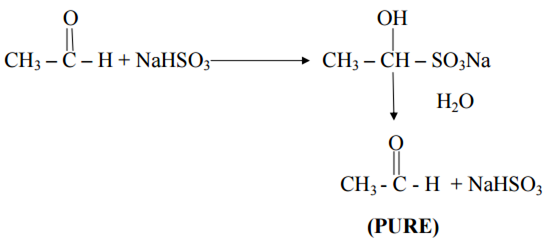
Aldehydes and ketones form bisulphite addition product with NaHSO3 while impurites does not on hydrolysis we get pure aldehydes and ketones.Boost Your Exam Preparation with myCBSEguide AppTo enhance your exam preparation and practice a variety of questions, download the myCBSEguide app today. The app offers complete study material for CBSE, NCERT, JEE (Main), NEET-UG, and NDA exams, making it the go-to resource for students aiming to excel in their exams. With a comprehensive collection of sample papers, solutions, and study notes, the myCBSEguide app ensures you’re well-prepared for your exams.Additionally, teachers can benefit from the Examin8 app, which enables them to create personalized exam papers with their own name and logo. This feature provides educators with an efficient way to design customized assessments for their students.Don’t miss out on the opportunity to streamline your study process.Visit myCBSEguide Website and Examin8 Website today and gain access to a wealth of resources designed to help you succeed in exams and improve your academic performance.
- (d) Salicylaldehyde
Explanation: Salicylaldehyde - (c) Gabriel phthalimide synthesis
Explanation: Gabriel phthalimide synthesis is used to get primary amine is prepared from alkyl halide without any change in the number of carbon atoms.

- (d) A is false but R is true.
Explanation: A is false but R is true. - (a) Both A and R are true and R is the correct explanation of A.
Explanation: Both A and R are true and R is the correct explanation of A. - (a) Both A and R are true and R is the correct explanation of A.
Explanation: (CH3)3-C-O-CH3 is an ether with two different alkyl groups, of which (CH3)3-C-I, tertiary alkyl group, on reaction with hydrogen halide (HI) forms a tertiary halide.
This occurs as the reaction is an SN1 reaction. The reaction involves the formation of a stable carbocation. If the ether has a primary alkyl group, then the reaction follows the SN2 mechanism. - (b) Both A and R are true but R is not the correct explanation of A.
Explanation: Phenols cannot be converted into esters by direct reaction with carboxylic acids since phenols are less nucleophilic than alcohols. - Section B
- The tetrahedral complexes do not show geometrical isomerism because the relative positions of the atoms with respect to each other will be the same. The square planar complexes on the other hand show geometrical isomerism because if same kind of ligands occupy positions adjacent to each other it is called cis-form and if these are opposite to each other it is called trans-form.
- In zinc salts, Zn2+ does not have unpaired electrons and has fully filled d orbital. Zn2+ has configuration [Ar]3d10 .Therefore, there is no possibility of undergoing d-d transitions whereas in Cu2+ions having electronic configuration [Ar]3d9, has unpaired electron which can undergo d-d transitions. Hence, zinc salts are white while Cu2+ salts are coloured.
- Answer the following:
- For a reaction R {tex}\rightarrow{/tex} P, half-life (t1/2) is observed to be independent of the initial concentration of reactants. Thus, it follows first order reaction.
- As the number increases the chance of simultaneous collision decrease that means the probability of more than three molecules colliding simultaneously is very small. Therefore, the possibility of molecularity being three is very low.
- {tex}M = \frac{{{w_B}}}{{{M_B}}} \times \frac{{1000}}{{V(in{\rm{ mL)}}}}{/tex}
{tex}98\omega /W{/tex}means 9.8g H2SO4 is dissolved in 90.2g water.
Mass of solution = 100g
Density of solution = 1.02g mL-1
{tex}\therefore{/tex} Volume of solution {tex} = \frac{{mass\;of\;solution}}{{density\;of\;solution}}{/tex}
{tex}{\rm{ = }}\frac{{100}}{{1.02}} = 98.04mL{/tex}
mass of the solute (H2SO4) wB = 9.8g
molar mass of sulphuric acid MB = 98g/mol
{tex}{\rm{M = }}\frac{{9.8}}{{98}} \times \frac{{1000}}{{98.04}}{/tex}
M = 1.02MOR
Increase in temperature decreases the solubility of oxygen in the water. The amount of oxygen dissolved in water decreases at a higher temperature. As a result, it becomes more difficult to breathe less dissolved oxygen. Hence, the aquatic species are not comfortable in warm water.
- Structure of the compound

- A = CH3CH2CN B = CH3CH2CH2NH2 C = CH3CH2CH2OH
- Section C
- We have,
{tex}Ni(s) + 2A{g^ + }(aq) \to N{i^{2 + }}(aq) + 2Ag(s){/tex}
For the reaction n = 2,{tex} E_{cell}^\theta {/tex} = 1.05 V
{tex}\Delta {G^\theta } = – nF{E^\theta }{/tex}
{tex}\Delta {G^\theta } = – 2 \times 96500\,C \times 1.05\,V{/tex}
{tex}\Delta {G^\theta } = – 202.65\,kJ\,mo{l^{ – 1}}{/tex}
For Equilibrium constant, we have,
{tex}\Delta {G^\theta } = – 2.303\,RT\,\log \,{K_c}{/tex}
{tex}\log {K_c} = – \frac{{\Delta {G^\Theta }}}{{2.303RT}}{/tex}
{tex} = – \frac{{202650}}{{2.303 \times 8.314 \times 298}}{/tex}
{tex}{K_c} = {\text{Antilog(35}}{\text{.5161)}}{/tex}
{tex}{K_c} = 3.284 \times {10^{35}}{/tex}Enhance Your Exam Preparation with myCBSEguide AppFor effective exam preparation and ample practice, download the myCBSEguide app today. This app provides complete study material for CBSE, NCERT, JEE (Main), NEET-UG, and NDA exams, offering a comprehensive suite of resources including sample papers, solutions, and study notes. With these materials, students can practice a variety of questions and strengthen their understanding of key concepts, ensuring they are exam-ready. In addition, teachers can use the Examin8 app to create personalized exam papers with their own name and logo, allowing for customized assessments that cater to their teaching needs. Visit myCBSEguide Website and Examin8 Website now and unlock the full potential of your study routine. Whether you’re preparing for board exams or competitive entrance exams, myCBSEguide offers the tools you need for success.- Let rate law is
{tex}Rate = k{[A]^x}{[B]^y}{/tex}
{tex}So, \,1.5 \times {10^{ – 3}} = k{[0.1]^x}{[0.1]^y}\,…\,(i){/tex}
{tex}3.0 \times {10^{ – 3}} = k{[0.2]^x}{[0.2]^y}\,…\,(ii){/tex}
{tex}6.0 \times {10^{ – 3}} = k{[0.2]^x}{[0.4]^y}\,…\,(iii){/tex}
From eq.(ii) and (iii)
{tex}\frac{{6 \times {{10}^{ – 3}}}}{{3 \times {{10}^{ – 3}}}} = \frac{{k{{[0.2]}^x}{{[0.4]}^y}}}{{k{{[0.2]}^x}{{[0.2]}^y}}}{/tex}
2y = 2
{tex}\Rightarrow{/tex} y = 1
From eq.(i) and (ii)
{tex}\frac{{3 \times {{10}^{ – 3}}}}{{1.5 \times {{10}^{ – 3}}}} = \frac{{k{{[0.2]}^x}{{[0.2]}^1}}}{{k{{[0.1]}^x}{{[0.1]}^1}}}{/tex}
{tex}2 = {2^x} \times 2{/tex}
2x = 1
{tex}\Rightarrow{/tex} x = 0
Thus, the rate is given as Rate =k[B]1 - Rate = k[B]
{tex}k = \frac{{Rate}}{{[B]}} = \frac{{3 \times {{10}^{ – 3}}}}{{0.2}}{/tex}
{tex} = 15 \times {10^{ – 3}}\,{\min ^{ – 1}}{/tex} - B {tex}\to{/tex} C + E (slow) is the possible reaction with is consistent with the rate law i.e.,
{tex}Rate = k [B]^1.{/tex}
Hence, mechanism II is appropriate for the reaction.
- {tex}\mathop {\mathop C\limits^1 {H_3} – \mathop {\mathop C\limits^2 }\limits_{\mathop |\limits_{OH} } H – \mathop C\limits^3 {H_2} – \mathop C\limits^4 {H_3}}\limits_{Butan – 2 – ol}{/tex}
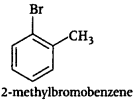
- {tex}\mathop {\mathop C\limits^3 {H_3} – \mathop {{}^2C}\limits_{\mathop |\limits_{C{H_3}} }^{\mathop |\limits^{C{H_3}} } – \mathop C\limits^1 {H_2}Cl}\limits_{2,2 – \dim ethylchloropropane}{/tex}
- Let rate law is
-
OR
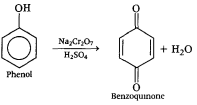
- {tex}\mathop {C{H_3}MgBr}\limits_{\mathop {Methyl\,\,magnesium}\limits_{chloride} } + \mathop {C{H_3} – \mathop C\limits_{\mathop {||}\limits_O } – C{H_3}}\limits_{\Pr opanone} \to C{H_3} – \mathop C\limits_{\mathop |\limits_{C{H_3}} }^{\mathop |\limits^{OMgBr} } – C{H_3}\xrightarrow[{ – MG(OH)Br}]{{{H_2}O}}{/tex} {tex}\mathop {C{H_3} – \mathop C\limits_{\mathop |\limits_{C{H_3}} }^{\mathop |\limits^{OH} } – C{H_3}}\limits_{2 – methylpropan – 2 – ol} {/tex}
- {tex}\mathop {C{H_2} = CH – C{H_3}}\limits_{Propene} \xrightarrow{{{H_2}O/{H^ + }}}\mathop {C{H_3} – \mathop C\limits_{\mathop |\limits_{OH} } H – C{H_3}}\limits_{Propan – 2 – ol}{/tex}
- According to the equation,
Fe(s) + 2H+ (aq) {tex}\longrightarrow{/tex} Fe2+ (aq) + H2(g)
{tex}E_{\text {cell }}^{\circ}=E_{\text {cell }}^{\circ}-E_{\text {anode }}^{\circ}{/tex}
{tex}E_{\text {cell }}^{\circ}{/tex} = 0 – (-0.44) V
{tex}E_{\text {cell }}^{\circ}{/tex} = + 0.44V
By applying Nernst Equation
Ecell = {tex}E_{\text {cell }}^{\circ}-\frac{0.0591}{2} \log \frac{\left[F e^{2+}\right]}{\left[H^{+}\right]^2}{/tex}
Ecell = {tex}0.44 \frac{-0.0591}{2} \log \frac{0.001}{1^2}{/tex}
Ecell = {tex}0.44-\frac{0.0591}{2} \log 10^{-3}{/tex}
Ecell = 0.44 + 0.089V
Ecell = +0.53V - Ambident nucleophiles are nucleophiles having two nucleophilic sites. Thus, ambident nucleophiles have two sites through which they can attack.
For example, nitrite ion is an ambident nucleophile.
{tex}\left[ {{}^ – O – \ddot N = O} \right]{/tex}
Nitrite ion can attack through oxygen resulting in the formation of alkyl nitrites. Also, it can attack through nitrogen resulting in the formation of nitroalkanes.

- For the button cell, chemical reactions are:
At anode:
{tex}Zn(s) \to Z{n^{2 + }}(aq) + 2{e^ – }{/tex}
At Cathode:
{tex}A{g_2}O(s) + {H_2}O(l) + 2{e^ – } \to 2Ag(s) + 2O{H^ – }(aq){/tex}
Complete reaction is:
{tex}Zn\left( s \right){\rm{ }} + A{g_2}O\left( s \right){\rm{ }} + {\rm{ }}{H_2}O\left( l \right){/tex} {tex} \to Z{n^{2 + }}\left( {aq} \right) + 2Ag\left( s \right){\rm{ }} + {\rm{ }}20{H^ – }\left( {aq} \right){/tex}, for this reaction, n=2 moles of electrons.
Now,
{tex}E_{cell}^\Theta = E_{A{g^ + }/Ag}^\Theta – E_{Z{n^{2 + }}/Zn}^\Theta {/tex}
= 0.80 – (-0.76) = 1.56V
We know that
{tex}{\Delta _r}{G^\Theta } = – nFE_{cell}^\Theta {/tex}
Here, n = 2
F = 96500 C mol-1
{tex}\Delta G^\Theta=-2\times1.56\;V\times96000\;C\,\;mol^{-1}{/tex}
= -301080 J mol-1
= -301.08 kJ mol-1
{tex}\therefore\Delta G^\Theta=-308.08\;kJ\;mol^{-1}{/tex} - Section D
- Due to the removal of an electron from the stable d10 configuration of Zn2+.
- Transition metals despite having high E° oxidation, are poor reducing agents because of their high heat of vaporization, high ionisation energies and low heats of hydration.
- Cr2+ is reducing as its configuration changes from d4 to d3, the having a half-filled t2g level. On the other hand, the change from Mn3+ to Mn2+ results in the half-filled (d5) configuration which has extra stability.
OR
The Stability of Cu2+ is more than Cu+ as stability depends on the hydration energy of the ions when they bond to the water molecules. The Cu2+ ion has a greater charge density than Cu+ ion and thus forms much stronger bonds releasing more energy.
- Solution shows a negative deviation from Raoult’s law / A-A and B-B interactions are weaker than A-B interactions.
- Carbon disulphide and acetone, Ethanol and acetone.
- According to Raoult’s law:
p1 = {tex}p_1^0 x_1{/tex} or x1 = {tex}\frac{p_1}{p_1^0}{/tex}
x1 = {tex}\frac{750}{760}{/tex} = 0.987
x2 = 1 – x1
= 1 – 0.987 = 0.013
OR
NaCl is a non-volatile solute, when it is added to water the vapour pressure decreases and hence boiling point increases.
Methanol is a volatile solute and its addition to water increases the total vapour pressure of the solution and hence boiling point decreases.
- Section E
- Attempt any five of the following:
- Fibrous Proteins
- Peptide linkage: A linkage formed when two amino acids are joined through -CONH- bond.
Glycosidic linkage: When two monosaccharides are joined through oxygen atom. - Nucleoside: Base + Sugar
Nucleotide: Base + Sugar + Phosphate
- Nucleoside {tex}\to{/tex} Nitrogenous base + Sugar whereas
Nucleotide {tex}\to{/tex} Nitrogenous base + Sugar + Phosphate group. - Thymine base, 2-Deoxyribose sugar, and a Phosphoric acid.
- On denaturation, protein globules unfold and unhelix gets uncoiled and protein looses its biological activity.
- DNA {tex}\longrightarrow{/tex} Deoxyribonucleic acid
RNA {tex}\longrightarrow{/tex} Ribonucleic acid- Thymine is present in DNA.
- Uracil is present in RNA.
- In [Fe(CN)6]3- complex, Fe is present as Fe3+.
Configuration of Fe= [Ar] 3d64s24p0
Outer configuration of Fe3+= 3d5

CN– being strong field ligand, pair up the unpaired d-electrons. Thus, two 3d-orbitals are now available for CN– ions.
{tex}\left[\mathrm{Fe}(\mathrm{CN})_{6}\right]^{3-}{/tex}
Since one electron remains unpaired, the complex is paramagnetic.
Moreover, (n -1) d-orbitals are involved in bonding. So, it is an inner orbital or low spin complex. - The complex, [Pt(en)2Cl2]2+ contains + two symmetrical bidentate ligands, ethylenediamine (en) and exists in two geometrical isomers, as and trans. Trans isomer being symmetrical does not show optical isomerism and hence, this isomer is optically inactive. While cis being unsymmetrical shows optical isomerism.

Hence, the structure of geometrical isomer (i.e. trans-isomer) of the complex [Pt(en)iCl2]2+ which is optically inactive is as follows:

trans [Pt(en)2Cl2]2+ isomer optically inactive (Superimposable mirror images)
- Fibrous Proteins
-
OR
-
- Hybridization of Cr in isomer A and B is d2sp3.
- Number of unpaired electrons in Cr3+(3d3) is 3
Magnetic moment {tex}=\sqrt{n(n+2)}{/tex}
{tex}=\sqrt{3(3+2)}{/tex}
= 3.87 BM
(deduct half mark for wrong unit/unit not written)
- IUPAC : hexamine cobalt (III) ion. hybridisation : d2sp3
- IUPAC : tetrachloridonickelate(II)ion. hybridisation : sp3


- {tex}\mathop {{C_2}{H_5}C{H_2}N{H_2}}\limits_{\begin{array}{*{20}{l}} {\begin{array}{*{20}{l}} {Ethyla\min e} \end{array}} \end{array}} {/tex} {tex}\xrightarrow{HNO_2}{/tex} CH3CH2OH {tex}\xrightarrow[K_2Cr_2O_7/ H_2SO_4]{}{/tex} CH3CHOOH {tex}\xrightarrow[\Delta]{NH_3}{/tex} CH3CH2NOH2 {tex}\xrightarrow{Br_2/KOH}{/tex} {tex}\begin{array}{l}{\mathrm{CH}_{3} \mathrm{NH}_{2}} \\ {\text { Methylamine }}\end{array}{/tex}
-
-
OR
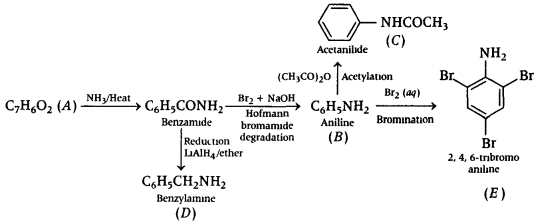
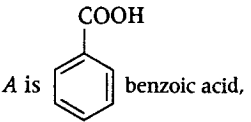
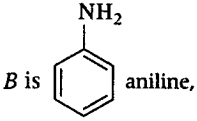

D is {tex}\begin{array}{c}{\mathrm{C}_{6} \mathrm{H}_{5} \mathrm{CH}_{2} \mathrm{NH}_{2}} \\ {\quad \text { Benzylamine }}\end{array}{/tex}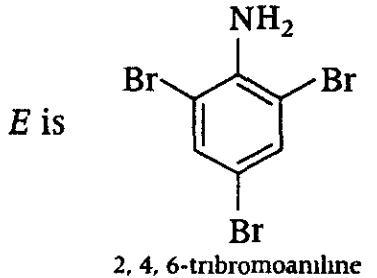

Prepare for Exams Effectively with myCBSEguide App
For comprehensive exam preparation and to practice a wide range of questions, download the myCBSEguide app today. This app provides complete study material for CBSE, NCERT, JEE (Main), NEET-UG, and NDA exams, making it the ultimate resource for students looking to excel in their exams. With a vast collection of sample papers, solutions, and study notes, myCBSEguide helps students to revise, practice, and master exam concepts efficiently. Get access to Class 12 Chemistry Sample Papers 2025 and revise topics with chapter-wise practice tests.
In addition, teachers can leverage the Examin8 app to create custom exam papers with their name and logo, offering personalized assessments tailored to their students’ needs.
Don’t miss out on these valuable resources. Visit myCBSEGuide Website and Examin8 Website now for effective study support and enhanced exam preparation.
Login to our student dashboard.
Sample Papers for Class 12
- Physics
- Chemistry
- Mathematics
- Biology
- English Core
- Business Studies
- Economics
- Accountancy
- Computer Science
- Informatics Practices
- Hindi Core
- Hindi Elective
- History
- Political Science
- Geography
- Home Science
- Physical Education
- Other Subjects
Download Class 12 Sample Papers for All Subjects from myCBSEguide
To access sample papers for Class 12 Physics, Chemistry, Biology, History, Political Science, Economics, Geography, Computer Science, Home Science, Accountancy, Business Studies, and more, visit the myCBSEguide app or myCBSEguide website. This offers a wide range of sample papers with detailed solutions, along with chapter-wise test papers for focused practice. Additionally, you’ll find NCERT solutions, NCERT Exemplar solutions, quick revision notes, CBSE guess papers, and important question papers to help you prepare effectively. Improve your exam preparation by practicing Class 12 Chemistry Sample Papers 2025 available for free download on myCBSEguide.
All of these CBSE sample papers are available for free download through the myCBSEguide app and website, making it the best study resource for CBSE students. Download now to enhance your exam preparation and boost your performance in Class 12 board exams.

Test Generator
Create question paper PDF and online tests with your own name & logo in minutes.
Create Now
Learn8 App
Practice unlimited questions for Entrance tests & government job exams at ₹99 only
Install Now

